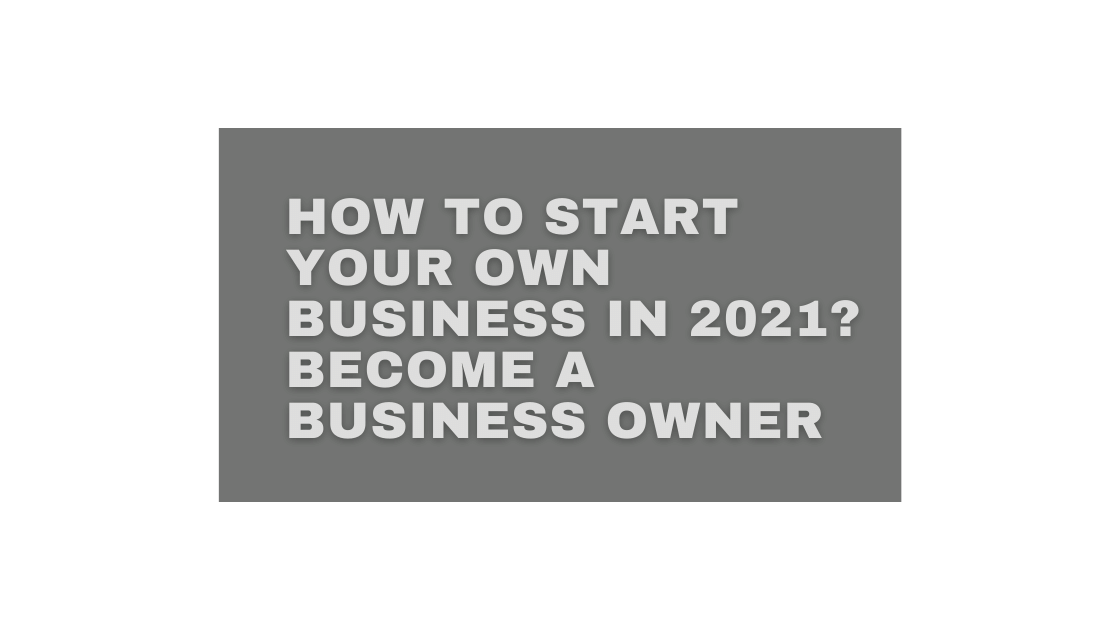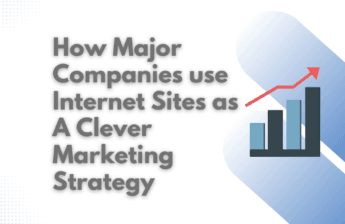Do you want to start your own business in 2025? Here is a guide about becoming a business owner.
“Entrepreneurship is like jumping off the cliff and assembling an airplane on your way down.” This quote by Reid Hoffman perfectly abridges the essence of entrepreneurship.
Starting your own venture is both risky and rewarding at once. History is filled with stories of both types – immense successes and epic failures. Nonetheless, nothing deters young adventurers from venturing on the entrepreneurial path and trying out their own luck.
While luck can play a huge part in where you end up, a lot of your success is also “scientifically” programmable. In simple words, building a successful business involves a series of steps to take and skills to acquire. Once you understand how that’s done and the science that goes into building a successful business, you can increase your odds of success.
Contents
- 1 Go All in and Make a Decision to Commit
- 2 Come Up with a Business Idea
- 3 Test Your Idea
- 4 Figure It Out
- 5 Find a Partner
- 6 Effort, Dedication, and Devotion
- 7 Iterate, Iterate, Iterate
- 8 Beat your Competitors by Targeting a Niche
- 9 Create Buzz About Your Business
- 10 Provide Good Customer Service
- 11 Learn How to Manage Cash Flow
- 12 Conclusion
Go All in and Make a Decision to Commit
The internet has democratized everything it takes to start a business. In the past, starting a business required acres of land and a horde of people to manage it. Today, you only need an idea to get off the ground.
But with this democratization comes a misconception that you don’t need to work hard to build a successful business. Well, this is nothing but a misconception. All those ads of business courses that depict entrepreneurs lying down on beach mats while their account rings with cash inflow are nothing but misleading.
To build a successful business, you need full commitment. A laptop and an internet connection may be sufficient to get the business up the ground but it doesn’t mean you don’t need to hustle and put in your man power. No business runs on auto-pilot, period.
The first thing your business needs is commitment, dedication, and persistence from you. You can continue with your day job if you wish. But you still need to dedicate time and effort to make your new business work. Every business requires 100% effort and dedication to see the light of day.
Come Up with a Business Idea
Ready to commit the time and effort required? You now need an idea to run with. What are you going to sell? Which product or service? Whom would you sell and where?
You don’t just sit and wait for the perfect idea to find you. You need to brainstorm and search for ideas. Here is how you can brainstorm and search for ideas.
Find Your Sweet Spot
Your sweet spot is found where the three areas overlap: passion, skill, and consumer demand. The best businesses are built in this sweet spot. The idea may not hit home right away. But keep searching and you’ll land upon your big idea.

Scratch Your Own Itch
Another way to find a business idea is to pay attention to your own pain points. What are some problems you are facing? Can you do something differently to solve them? If you’re facing a certain problem, chances are other people are facing them too. And if you can solve them, others would be willing to avail the solution as well.
Mark Lore scratched his own itch when he built his first business selling diapers online. As a new parent, he realized how painful it was to order diapers and other baby products. And so, he built his online store that gave Amazon a tough time.
Think about those ‘Aha’ Moments
Another way to come up with a great business idea is to pay attention to those Aha moments. It could be anything that makes you excited or happy. Some new recipe you stumbled across that delights your taste buds. A new idea for a service that could make your life easier. Anything that gives you pleasure and excitement can be a great business idea.
Test Your Idea
A business idea, no matter how lucrative it may sound, is no good if it’s not validated by data. Before you start your business, test your idea and make sure it’s something people would pay for and appreciate.
Talk to people around you, run surveys, and find out what they think about your idea. It could be a simple question like ‘if I created this product or offered this service, would you buy it?’
Once you get some positive response from that initial question, go ahead and create a few samples or mockups. When Pastreez thought about starting a French Bakery in the US, they first tested their products by hosting meetups and giving away their macarons and other products for free. They wanted to know how people perceived them before they forged ahead with their business.
Another way to test your idea is by creating a mockup of the product and offering it on your eCommerce website for pre-ordering. Make sure the eCommerce platform you choose offers a pre-order feature. If you get a lot of pre-orders, it definitely means you’ve hit the bull’s eye.
You can also test your idea on crowd-sourcing platforms like Kickstarter. Crowd-sourcing not only validates your idea but also raises funds needed to build the first foundations of your company.
Figure It Out
Once you’re sure that your idea will kick off, the next step is to figure out everything. Who are your competitors? How you’re going to make the product? From where you’ll source? What things are required? How you’ll keep costs low, offer a competitive price, and still make profit?
To be honest, these aren’t easy questions to answer, especially if it’s an industry you know nothing about.
When the founder of Away came up with the idea of manufacturing robust and trustworthy luggage that don’t fall apart at the airport, she had no idea what she was getting into. She just knew the idea was a hit and she ran with it. But how is luggage made? How do luggage factories operate? What material is used? She had no clue about it.
But everything can be figured out. You just need to talk to the right people and look in the right places. If you’re unsure of the manufacturing process, go and visit factories. Don’t be afraid to ask questions. Start learning all that’s required to build your company’s foundation.
In fact, you’ll find this learning stage at every step as your business grows. Things keep changing and you should be ready to figure out things, learn, and adapt.
Find a Partner
Do you know that most venture capital firms won’t even fund your business if you don’t have a partner? This was why the founder of Dropbox went in search for a partner – he couldn’t get a VC firm to fund him!
The entrepreneurial journey is a rocky and scary road, indeed. Having a companion to share your fears with can mean the difference between success and failure.
In fact, one of the reasons why great ideas fail before seeing the light of day is because only one person is trying to traverse the rocky trail. Chances are, the dangers, risks and problems ahead are going to intimidate even the most passionate adventurer before he goes very far.
A partnership has several benefits, especially when you have a very clearly defined operating agreement in place. When things get tough and you run into problems, your partner will encourage you to stick around. And when you don’t see results and start slacking off, your partner will hold you accountable so you stick around a little longer and try different approaches to make things work.
Effort, Dedication, and Devotion
If you want to start a business because you’re tired of working hard at your current job, think again. If you think running a business would be easier than your 9-5 job, stop right in your tracks.
Your business is more demanding than a 9-5. It requires 24 hours of your time. If you’re doing it right, you’ll be thinking about your business day in and day out. You should be embracing yourself for sleepless nights and lots of restless tossing and turning.
When you start a business, you’ll be wearing multiple hats – customer service, HR, marketing, sales, catalog management, CEO. This will require a lot of time, effort, and dedication.
Depending on your product, you may even be making it yourself – in your living room or kitchen. Successful companies like The Lip Bar, Method, and FUBU all started at home with their founders experimenting in the kitchen and making their first products themselves at home. They would make the product, pack it, and drive around to ship them – all by themselves.
Iterate, Iterate, Iterate
When the founder of Clif Bar got the idea of its famous granola bar, it took him several rounds of iterations before perfecting the recipe. Every time he would try a new recipe, he would bring it to his friends and family. And every time, they would wince at it and laugh it off. But he kept iterating until he created something that delighted everyone.
Successful entrepreneurs not just iterate the product – they even change their business vision at times when the original one doesn’t seem to hit.
While constant iteration is important, it’s also important that you don’t get stuck in that ‘iteration’ loop forever. Imperfect is perfect, they say. Keep iterating until you find something decent enough to roll out into the world. Once it’s out, keep iterating and innovating. The innovation process actually never stops.
Beat your Competitors by Targeting a Niche
Seth Godin suggests that the only way to stand out in today’s competitive marketplace is by building something remarkable that doesn’t already exist. You need to be different. You need to be a purple cow to get attention.
But how? Being a purple cow is no easy task. It’s really hard to find business ideas that aren’t already taken. If there isn’t any competition, chances are there is very little demand – a problem in of itself.
If there is demand, there are ought to be competitors who will try everything in their might to create friction for you and even crush you before you even begin.
A clever strategy, as suggested by Guy Raz in his book, How I Built This, is to find a side door that’s isn’t as heavily guarded as the front door and is often also bigger than the front one.
One way to enter through a side door is by finding a niche market the big guys are not targeting. Create a product for that market and market it directly to them.
With competition high in every business category, niching down is the only way you can succeed today.
Create Buzz About Your Business
Once you’ve rolled out your product, you need to get people talking about it. Creating buzz is extremely important and can make a difference between a business that succeeds and one that fails.
There are several ways you can spread the news about your business.
Free samples: After perfecting his recipe of Clif Bar, Gary (the founder) put up stalls at sports events and gave away free samples of his granola bar to athletes. Free samples can help you get attention especially in an overcrowded category.
Social media marketing: Don’t wait for the product to launch. Create a pre-launch campaign on social media networks like Facebook. Put together teaser videos and graphics to get people talking about you.
Be present everywhere your customers are hanging out: Social media has actually made it easier to increase brand awareness and create buzz. Just figure out where your customers hang out and ensure your presence there. Engage with your audience, talk to them, and offer valuable tips and advice.
Partner with influencers: Influencer marketing can be very effective in getting the word out about your business. You don’t even have to approach the big shots out there. Go for smaller accounts who would happily market your product in exchange for a free product or a small fee.
Referral marketing: Another way to get traction with your business is to start a referral program in which you reward your customers for making referrals. Many successful companies like Dropbox and Uber used referral marketing to create buzz about their business and acquire more customers.
Digital Marketing – Paid and Organic: Digital marketing including organic and paid media can help you drive traffic to your website. Do a thorough keyword research to find out the keywords used by people when searching for a product or service like yours. After attracting traffic, your next step should be to convert it. Use Conversion Rate Optimization technique to convert your site visitors into your customers. Offering coupons, freebies and other persuasive techniques will help in this regard.
Provide Good Customer Service
Happy customers are likely to stay loyal to your brand and return. Even a 5% increase in customer retention can lead to a 25% increase in profits. Well, how does that work? This is how:
By retaining your current customers, you’ll decrease your customer acquisition costs. Plus, those retained customers are likely to spend 300% more with your brand. The increased sales and lowered costs result in increased profits.

Happy customers are also more likely to make referrals and bring more business to you. This also means you can spend less on marketing as your customers become your brand advocates.
But how do you improve your customer service? Does it mean you have to hire more people for your customer service team? Or increase your customer service budget? Won’t that hurt your bottom line?
Customer service automation is the answer to this paradox. With automation solutions, you can automate the repetitive tasks to increase the efficiencies in your customer service department. With automation solutions and by keeping your systems synced together, even a small customer service team can do a lot and lead to a noticeable improvement.
Learn How to Manage Cash Flow
One reason why businesses aren’t able to keep their lights on is because they’re bad with their cash flow.
Cash flow is the amount of money coming and out of your business. Staying on top of your cash flow and managing it well would lead you to make better decisions and spend in the right places.
Not managing your cash flow can also affect your relationships with your suppliers and employees. When managing your cash flow, it’s important to plan in advance so you’ll know when you have to pay who and ensure you’ll have the funds available to pay them.
If you aren’t financially literate, learn the art of cash flow management before you venture far ahead.
Conclusion
Starting your own business can be both exciting and frightening. While it may be natural to have big dreams, it’s actually best to think small and take baby steps ahead. If you take a look at the history of successful companies out there, you’ll realize that most of them were thinking really small in the beginning. But as they became successful and achieved their goals, they just thought about the next best thing for their business and acted accordingly. Think big but act small.
In the post above, we outlined the steps you need to take your business from inception to success.







